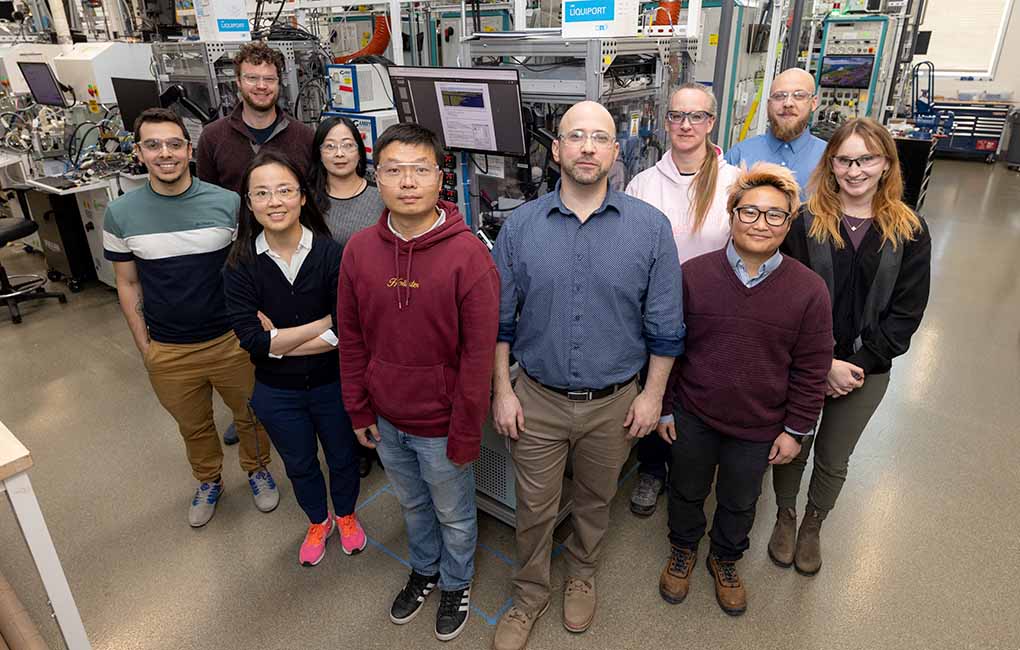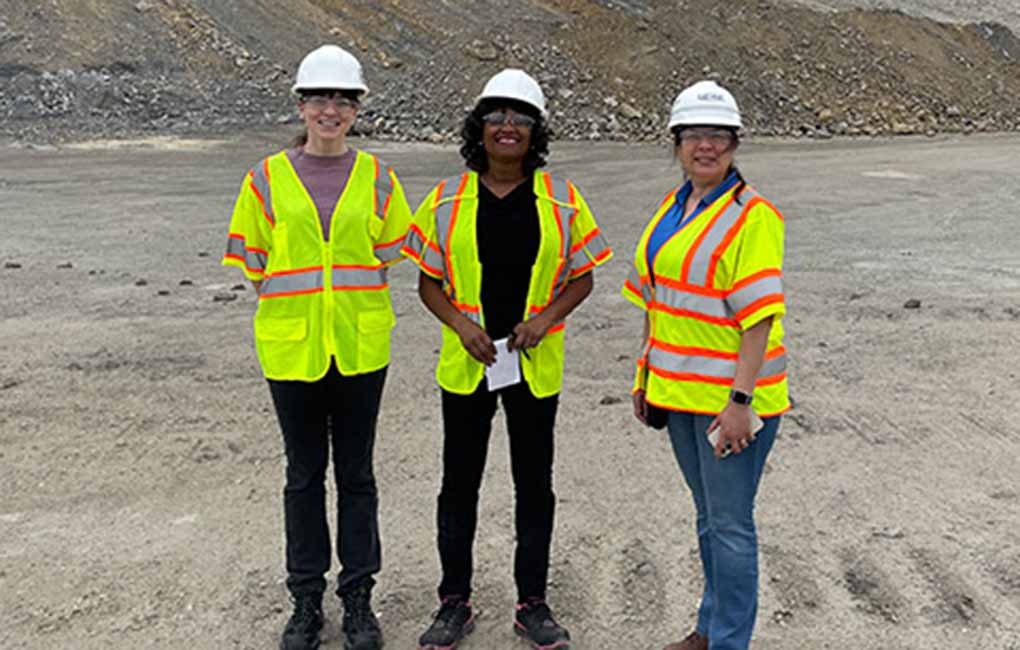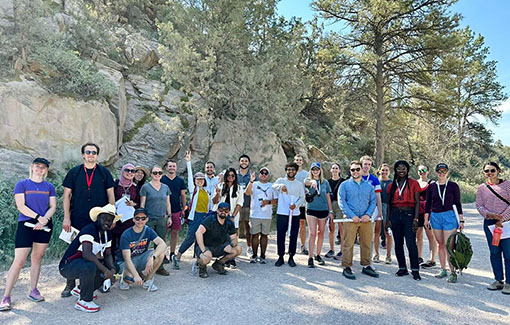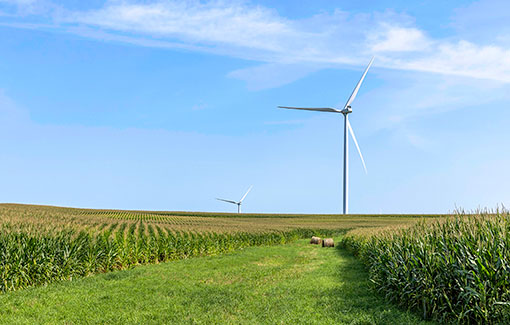Carbon Conversion
NREL's carbon conversion research capabilities support development of strategies and technologies to capture and convert carbon dioxide (CO2) from air or concentrated sources.
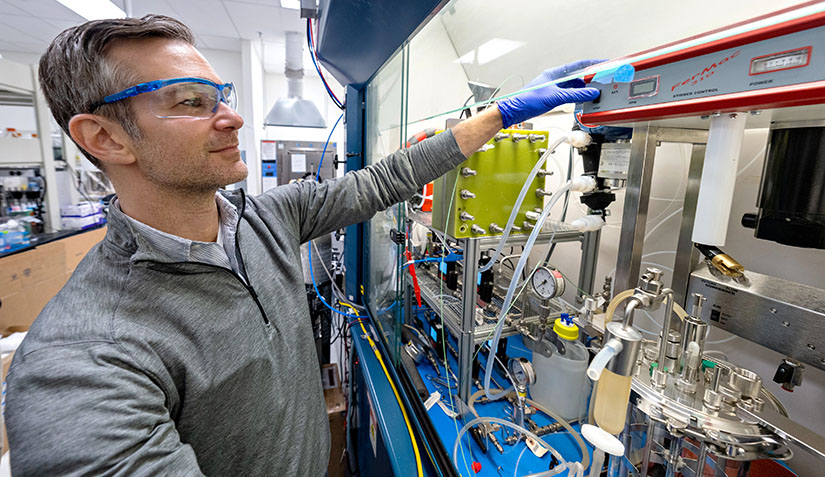
Explore how to partner with us.
Our researchers leverage capabilities in integration science; multiscale computational modeling; thermo-, electro-, and bio-catalysis; and comprehensive decision support analyses to valorize waste streams and generate revenue.
Our areas of focus include:
-
Integrating CO2 capture and conversion through process intensification
-
Engineering microbial systems to convert CO2 to value-added products
-
Electrocatalytic approaches using electrons as reductants in the production of fuels and chemicals
-
Removing CO2 from the atmosphere through biomass with carbon removal and storage, direct air capture, and mineralization
-
Evaluating systems-level trade-offs of carbon management technologies, in partnership with communities and industry, to inform decision-making.
Reactive Carbon Dioxide Capture and Conversion
NREL is developing processes for integrating capture and conversion of CO2 from the air and point sources. Examples include improving the efficiency of microorganisms to harvest CO2 from the atmosphere and convert it to chemicals and designing catalysts to produce methanol at high yield from captured CO2.
These microorganisms can assimilate molecules such as formate, generated by electrocatalytic reduction of CO2, and are being engineered to convert formic acid to renewable fuels and high-value chemicals. These novel strategies circumvent safety, solubility, and mass-transfer issues associated with gaseous feedstocks.
Electrons to Molecules
Renewable energy provides a source of electrons that can be used in catalytic processes to generate desired products. NREL's integrative science utilizes multiscale facilities across thermochemical, biological, electrochemical, and hybrid approaches.
CO2 Reduction and Upgrading for e-Fuels Consortium
The NREL-led CO2 Reduction and Upgrading for e-Fuels Consortium is a U.S. Department of Energy multi-organization consortium that develops and derisks advanced technologies that use renewable electricity to convert carbon dioxide into e-fuels and commodity chemicals.
Innovations for Mining, Industry, and Agriculture
Industrial processes such as cement production, mining, agriculture, and heat generation for chemical production are energy-intensive. In a drive to reduce energy costs of industrial processes, NREL is developing innovative platforms from mineralization of mine tailings to microbial systems that can provide robust bioleaching of metals in battery recycling, biomanufacturing of food-quality protein, and biogenic calcium carbonate for Portland limestone cement.
Carbon Management Workshops
Reactive CO2 Capture: Process Integration for the New Carbon Economy Workshop Proceedings
How NREL's Carbon Conversion Capabilities Impact Our Economy
Explore how NREL research strengthens an emerging carbon conversion industry.
Economic Feasibility for CO2 Utilization Data Visualization Tool
The tool offers insight into the economic feasibility and key cost drivers of producing chemical intermediates from CO2 and electricity across five conversion pathways.
Contact
Contact Josh Schaidle to leverage these capabilities and expertise or learn more about partnering with us.
Share

